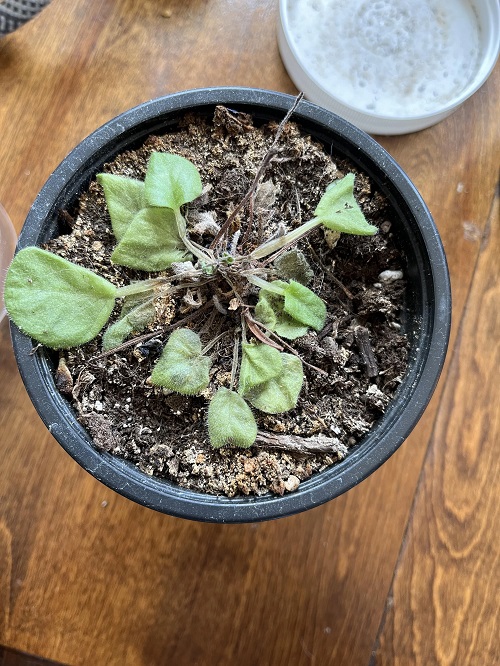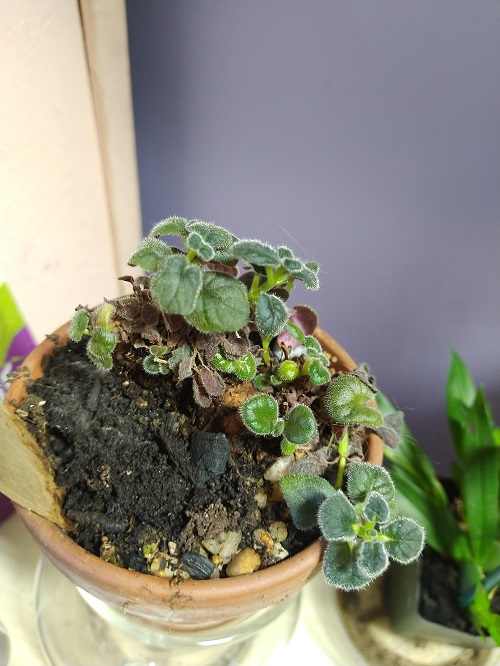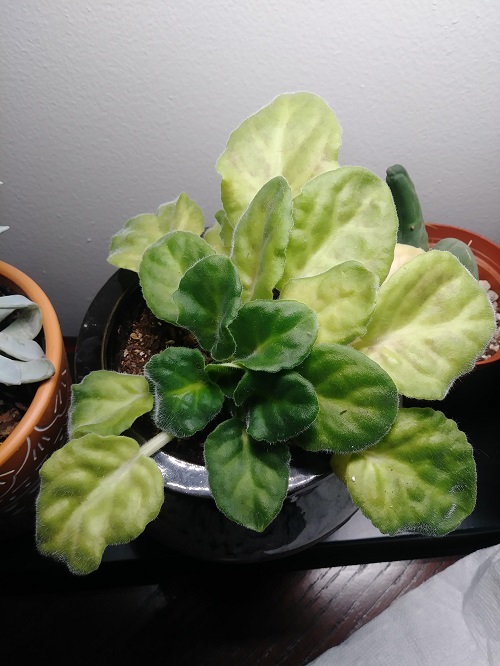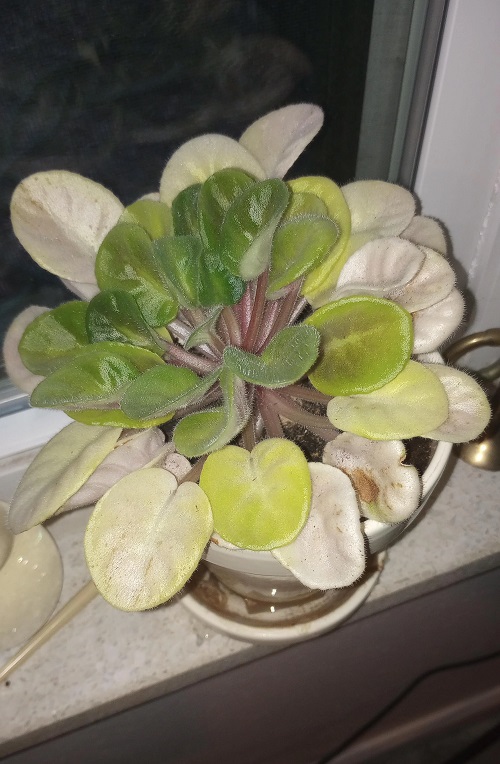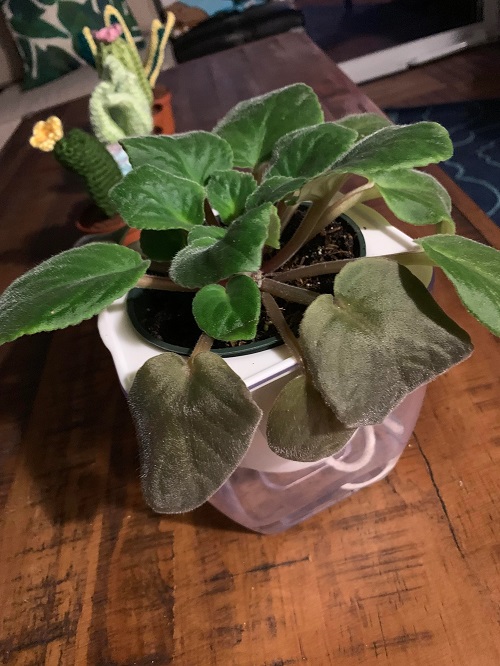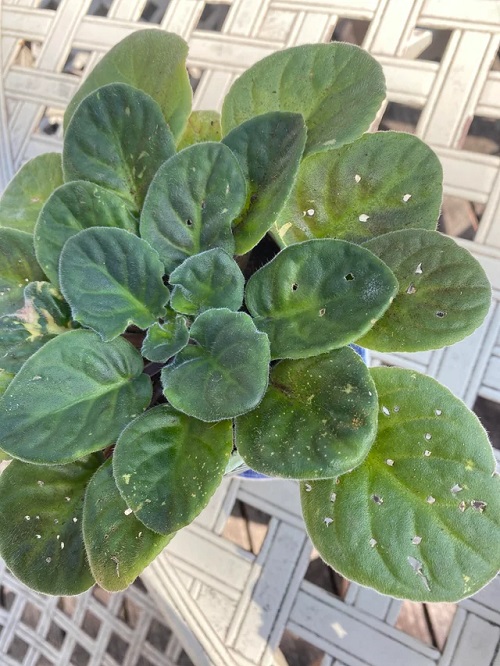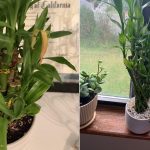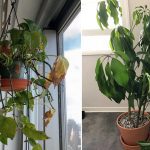These African Violet mistakes not only keep the plant from flowering but could also be fatal if ignored for a long time!
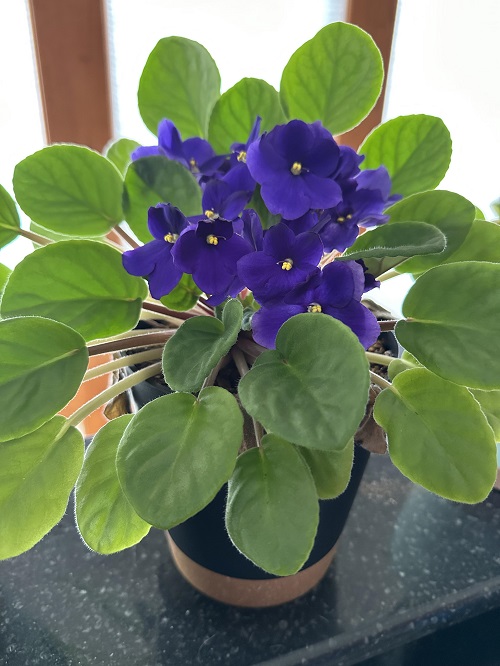
African violets have a reputation for being challenging to grow, often frustrating even experienced gardeners. Keeping them alive can be tricky, and getting them to bloom continuously is an achievement. However, understanding the common African Violet mistakes and working on them can lead to success!
African Violet Mistakes that Keep it from Flowering
1) You are Either Over or Underwatering it
When these plants sit in too much water, their roots, deprived of oxygen, begin to rot, creating an ideal breeding ground for fungal diseases. The symptoms of overwatering manifest as soggy, limp leaves and a wilted appearance, despite the soil being wet.
Conversely, underwatering can be just as harmful. These plants will quickly let you know they’re thirsty by displaying droopy, dry leaves and stunted growth. The soil will pull away from the edges of the pot, a clear sign of dryness. Consistently underwatered African Violets can become stressed, which leaves them vulnerable to pests and diseases.
Also, avoid overhead watering, as the leaves hold onto water really well, which can lead to foliage rot. So, you must only water it from the bottom directly into the soil.
2) Humidity Levels are Low
If your African violets struggle to bloom despite forming buds, the problem might be due to low humidity. These plants thrive in a more tropical-like moist environment, ideally requiring humidity levels between 60% and 80%. Dry air can cause the buds to dry out before they open.
Instead of misting the plant directly—which can leave water spots on the leaves and potentially lead to fungal diseases—you can boost humidity by placing the plant on a pebble tray filled with water. Make sure the pot sits above the water line to avoid soggy roots. Alternatively, using a room humidifier set away from direct contact with the plant can also help maintain the right moisture level around the plant, encouraging them to flourish and bloom beautifully.
3) The Plant is Getting Too Much Sunlight
These plants need bright, indirect sunlight—not direct sun, which can scorch their leaves and stop them from flowering. There’s this misconception that flowering plants like African violets need full sun, but that’s a mistake. Direct sunlight can actually harm them. Instead, place them near a window with plenty of soft, diffused light. East- or west-facing windows are great options, or maybe you can line them on the kitchen windowsill.
If your home doesn’t get much natural light, using grow lights for about 6 to 12 hours a day can help.
4) You are Ignoring Temperature Fluctuations
Not just high humidity, but African violets also love temperatures ranging between 65°F and 80°F. This is because they naturally thrive in the rainforests of East African countries like Tanzania, which are up in the mountains.
If there is one thing that African violets absolutely crave, it is consistency. Since it comes from tropical environments where temperature and humidity hardly fluctuate, it cannot survive significant temperature fluctuations when grown indoors. Sudden dips in temperature due to drafts or being placed too close to the windows during winter can not only lead to leaf drop but also loss of blooms, among other issues.
Be sure to grow your African violets in the warmest room of your house with stable temperatures throughout the year. Do not even think of moving them outdoors, especially during winter, to avoid permanent damage to your plant!
5) Feeding it Too Often
Another reason why your African violets refuse to flower may be because you are either not feeding them or using the wrong fertilizer. The first thing to consider when getting a new fertilizer for your plant is whether it has all the proper nutrients. For example, if you have been seeing bud blasts, that is, buds failing to flower, it could be a sign of calcium deficiency.
Another sign of calcium deficiency is small or deformed leaf growth and browning or prematurely dying flowers. To address this, you must feed your plant regularly, as flowering takes up a lot of energy.
Begin using a flower-specific fertilizer, as the foliage fertilizers high in nitrogen promote leaf growth rather than flowers. Be cautious not to overfeed, as this can lead to fertilizer burn and damage your plant. Follow the dilution instructions on the fertilizer package and keep an eye on your plant to ensure its needs are being met for optimal flowering.
6) Using The Wrong Soil Mix
African violets are super picky about their growing conditions and specifically need a well-draining acidic soil mix that aerates their roots and retains moisture well. However, they do not like soggy, too-wet soil, which can lead to root rot. This is to say that you can’t provide your violets with just a standard potting mix and expect them to bloom.
Use a soil mix specifically designed for African violets. This mix typically contains a balance of peat moss, vermiculite, and perlite, ensuring proper aeration, moisture retention, and the right pH level to meet the plant’s needs.
7) Rooting it in a Bigger Pot that Needed
Your African violets won’t flower even with all of the right growing conditions? Well, its pot size may be too big! In a big pot, the roots just keep growing downward, and the plant sees no reason to flower at all, so it keeps being in foliage mode. Plus, too much soil can also lead to root rot in your African violets.
Sometimes, these plants need soil refresh, but they like to stay compact throughout their lives. Hence, always use a pot that’s just one size bigger than the plant root ball.
8) Ignoring Signs Of Pests And Diseases
You must immediately take action if you notice spots, small bugs, discoloration, or wilting in your African violets. Though a minor leaf drop or a spot here and there are no causes of major concern, you must be mindful of too many spots, widespread discoloration, or irregular holes, which point to pest infestations or diseases. Do not wait to resolve these issues until later, as they will only get worse, killing your plant.
The best bet is to use a neem oil spray targeting the affected areas. Mix 5-10 drops of neem oil in a liter of water and one tablespoon of dishwashing liquid to make the perfect blend against any pest infestation.

